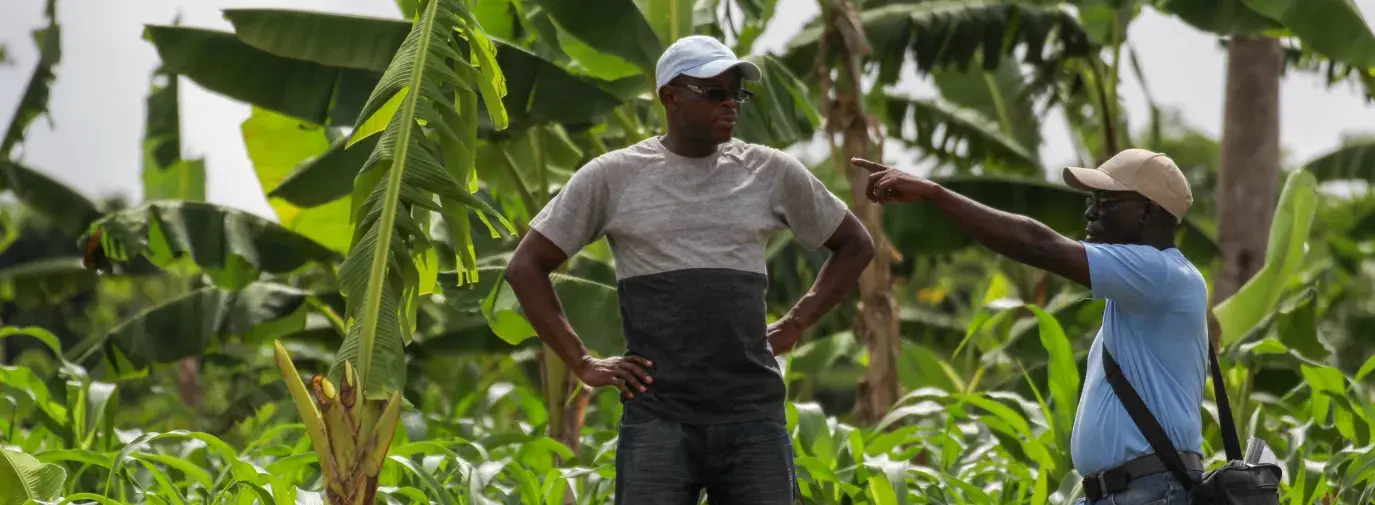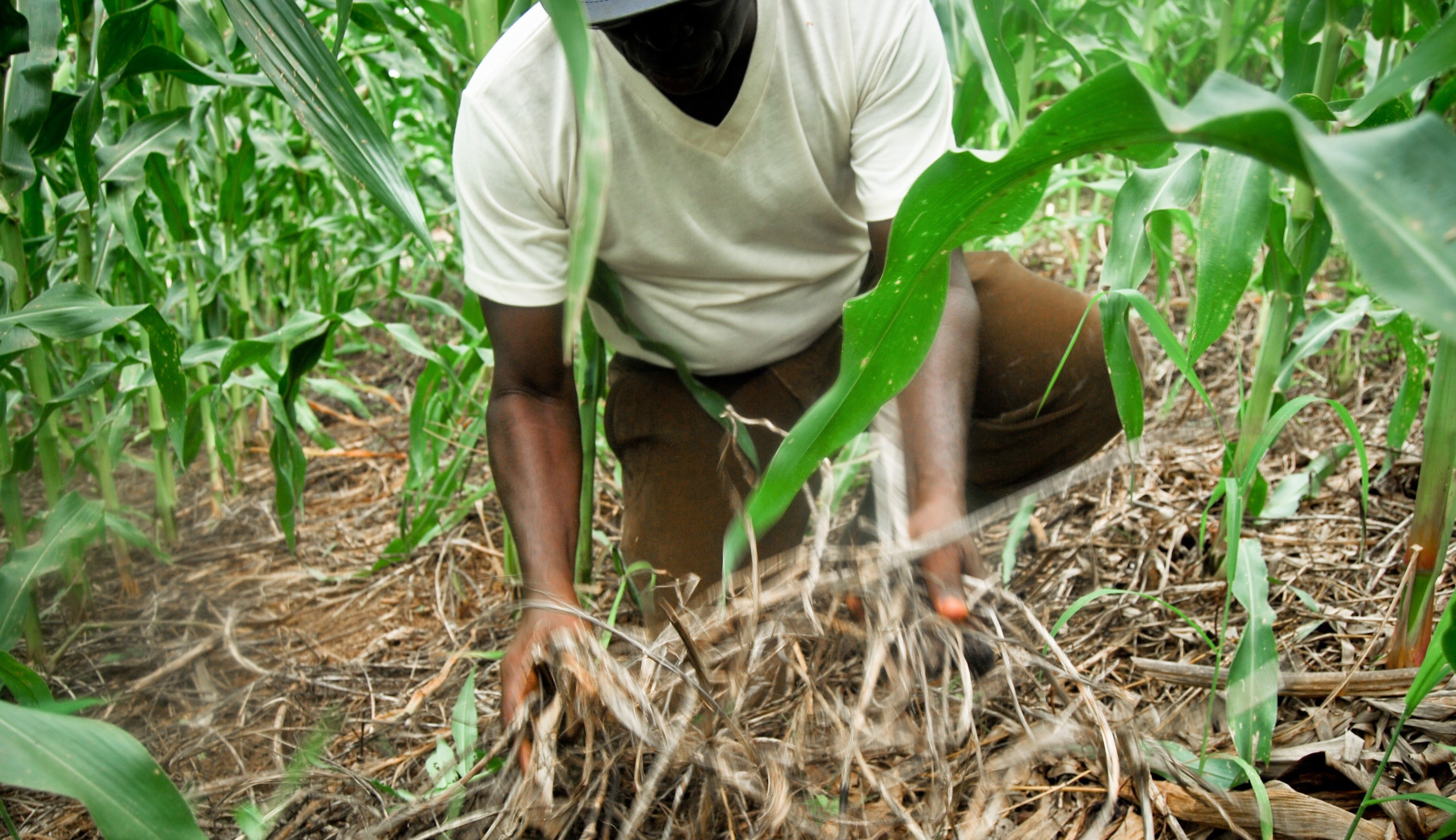
Q: How did you become interested in farming?
Kofi Boa (KB): My parents were farmers, and as a young child they had to take me to the farm on weekends and school holidays. Just like all the children in the village, I only knew the school and the farm. I liked the farm because there was always so much to eat and a lot of space to play. This got me interested in farming, and I wished everyday was a weekend or holiday. Today, I am a farmer and educator. I grow a wide variety of food and cash crops, including trees, vegetables, grains, and cover crops. I grow a number of different crops on my (size) farm."
Q: When did you learn about the importance of soil health and begin putting it into practice?
KB: My father died when I was 10 years old. At age 12, my mother’s cocoa farm--which was our main source of family income--was burned by a neighboring farmer who had set fire to his field to prepare for planting corn. From that day on, I pledged to fight slash and burn, a method used by farmers to prepare their fields for planting, which gives crops an initial nutrient boost but kills the soil life necessary for sustained, healthy farmlands. I spoke to elders in the village and learned that, rather than use fire, they used to cut vegetation, leave it on the ground for a year, and then come back to plant crops--especially cocoa--when it had decomposed. This technique was called “proka” in the local Akan language. I started practicing “proka” at that age and have adapted it by planting in the mulch immediately after slashing, without the one year waiting period.
Q: What growing practices do you follow?
KB: Everything I do on my farm is guided by a goal to regenerate the soil:
- Minimal soil disturbance through no-till and/or reduced tillage practices such as planting directly on the mulch covered field
- Permanent soil cover by retaining crop residue on fields after slashing or using cover crops if there are no residue
- Crop diversification through crop rotations
Q: What inspires you to use these practices?
KB: Human population has dramatically increased in Sub-Saharan Africa over the past two decades, resulting in increasing demand for food. While the number of people that need to be fed is rising, the arable land area suitable for producing food is declining. This is due to enhanced desertification, flooding, accelerated urbanization, and unfavorable farming practices--especially land preparation methods.
I am inspired by the regenerative power of agriculture to build healthy soils, increase organic matter and nutrient levels, enhance soil life, and improve soil structure to meet rising demands for food. The practices I use and advocate for allow for continuous and intensive farming in an environmentally friendly and profitable manner, whilst satisfying human needs for food and/or income. This is all possible because of soil health. I believe these practices help balance production, costs, environmental considerations, and economic sustainability.
Tell us about the Centre for No-Till Agriculture (CNTA) and the outcomes you witness when regenerative agriculture is adopted by the communities you work with.
KB: I founded the CNTA to show the benefits that come from conserving and regenerating the soil. I had been using these farming practices on my farms as an example, where farmers could see results. I began to teach others, and farmers were getting interested, so I started the Centre
At CNTA, I teach farmers about forest productivity, fallow land, and how to replicate healthy soil conditions on arable lands using the principles I mentioned earlier. I build farmers’ confidence with interactive and visual evidence on demonstration plots and other farmers’ fields. Once farmers become confident that the approach work, they complete hands-on practical training so they feel comfortable implementing on their own lands.
With healthy, productive soils, farming can be a real business and an assured means of livelihood. Outcomes are visible in the community, with the elimination of bushfires, year-round food security, and the creation of wealth among vibrant youth in rural areas.
Q: What do you see as the biggest challenges in getting farmers on-board?
KB: The benefits of building soil health are slow to realize, and no-till practices are not wide spread. There is a lack of support and promotion around regenerative agriculture. Financing is needed for creating additional learning and demonstration plots for farmer training. Farmer-to-farmer extension services are very important, but the lack of incentives for getting outstanding smallholder farmers involved continues to hinder the spread of regenerative agriculture. Inadequate inputs and market access is also limiting and slows more widespread adoption of these practices.
Q: How can consumers support the work that you are doing?
KB: Rising consumer demand could trigger more interest in products grown regeneratively, which in turn would drive the recognition and adoption of soil conserving practices at the farm-level. This would greatly support our initiatives at CNTA. Rising consumer demand for these products will have positive impacts on the changing climate, as more environmentally-friendly production practices are employed.
To learn more about Kofi’s work, visit https://centrefornotill.org/
To learn more about Grow Ahead’s work with farmers like Kofi, visit https://growahead.org/




